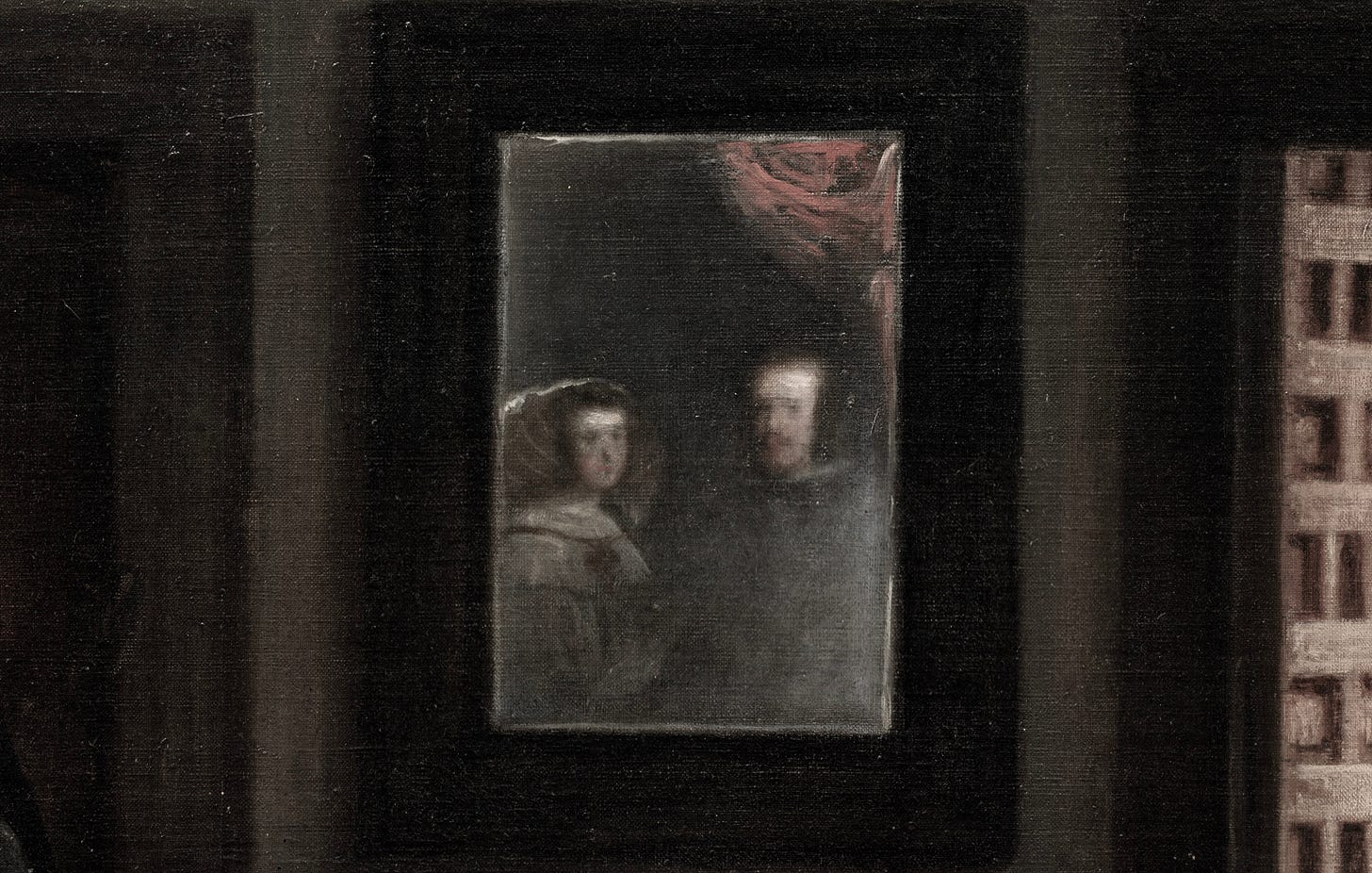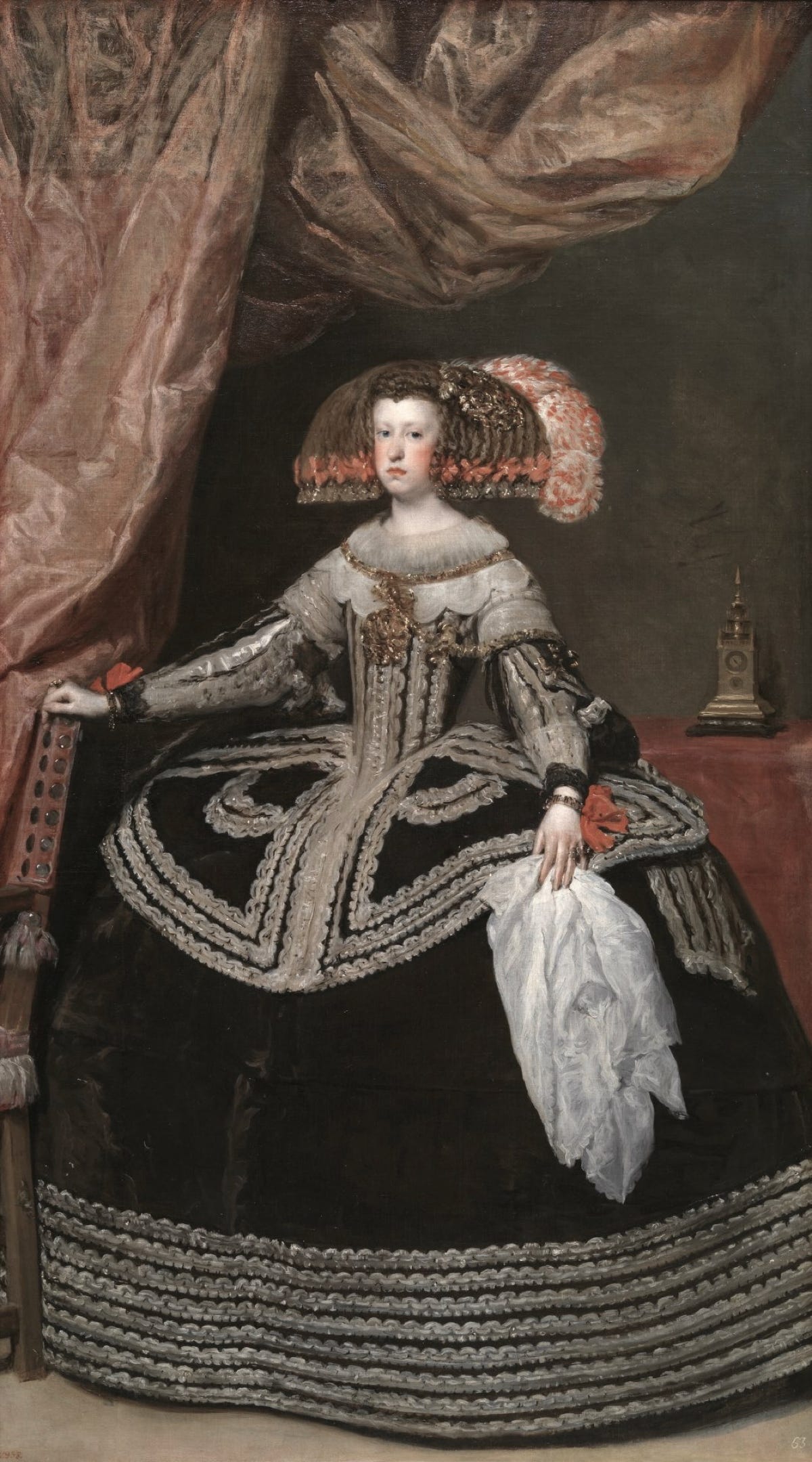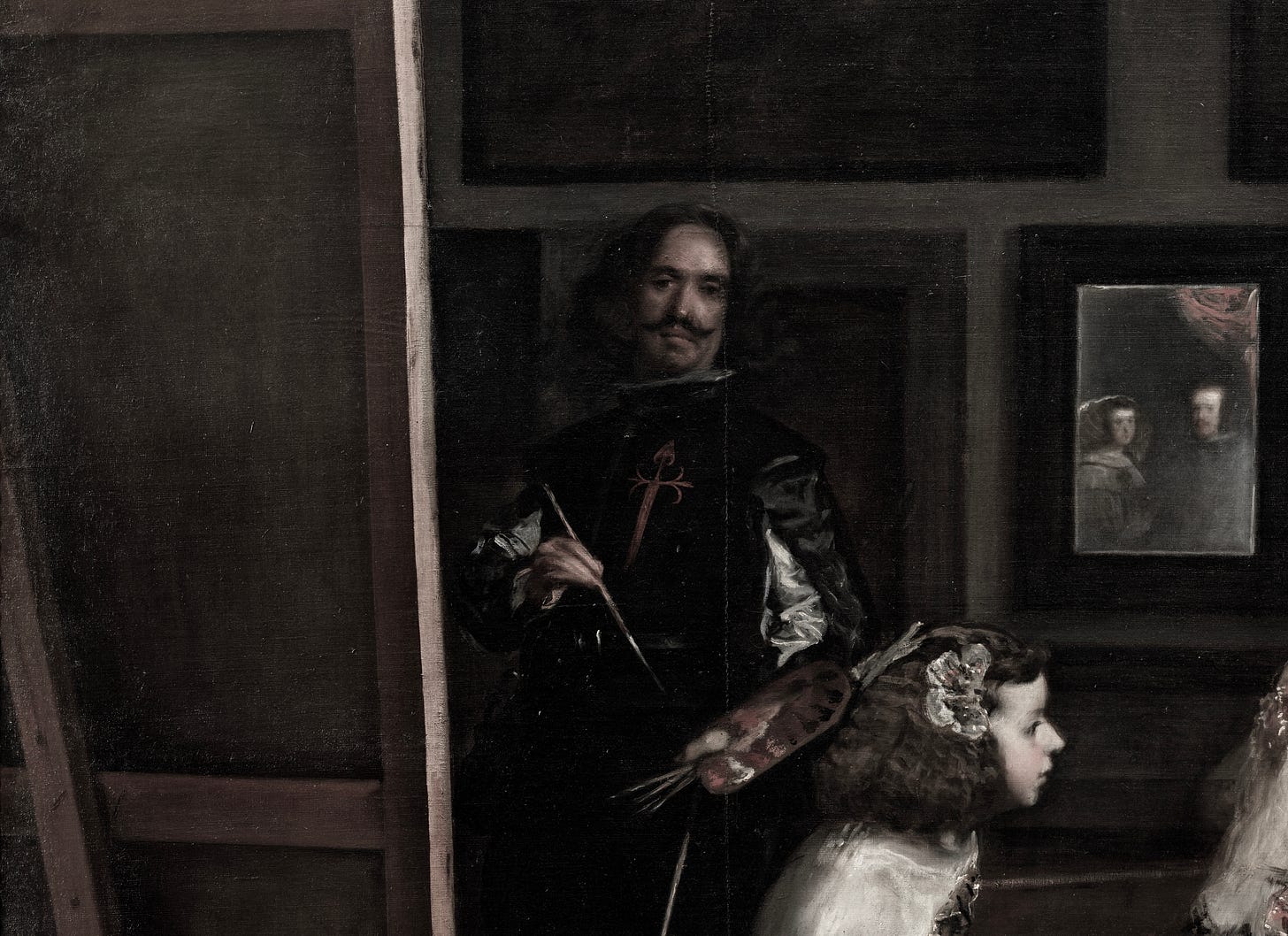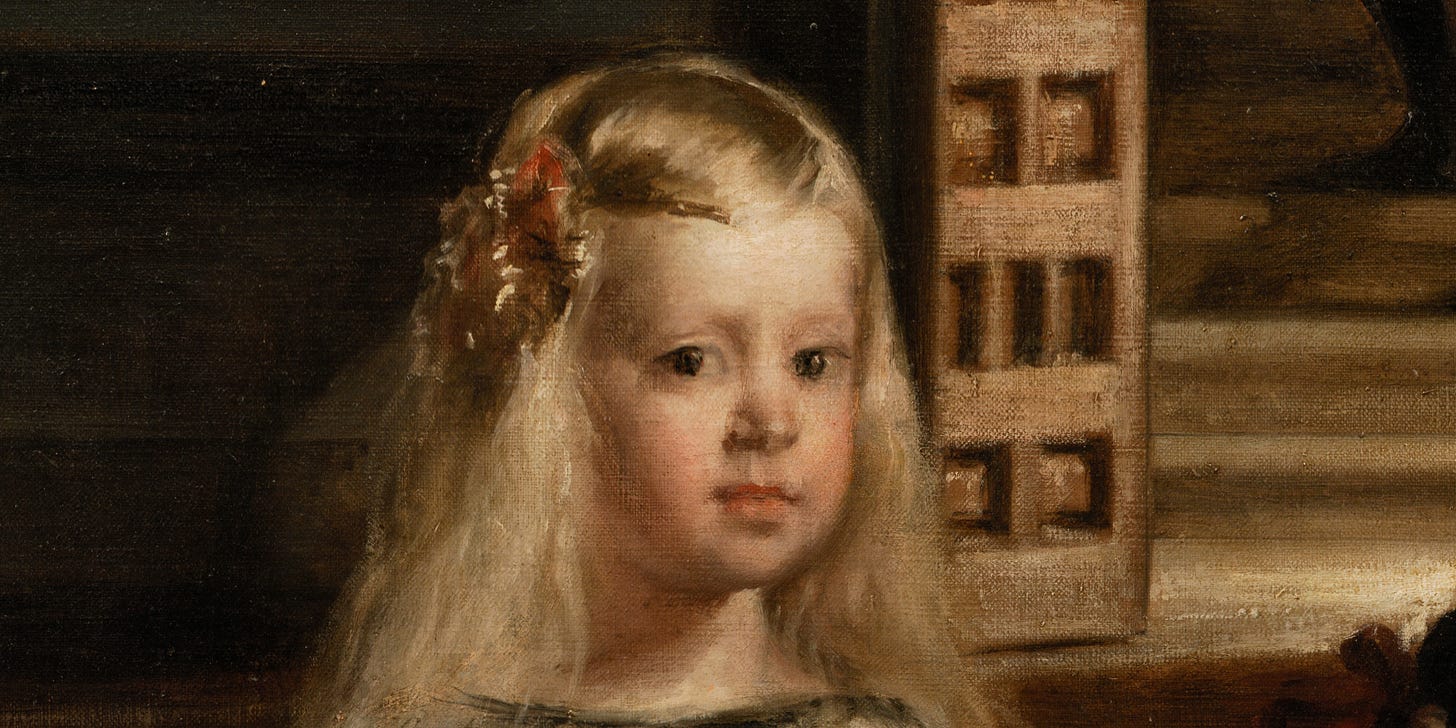I’ve been thinking about the work of three artists, spanning three centuries: Diego Velázquez (seventeenth), Sofonisba Anguissola (sixteenth), and Francisco de Goya (eighteenth and early nineteenth centuries).
They were all in their own day great painters working at the Spanish court in Madrid, employed to do a range of tasks, and probably all more or less frustrated at not having enough time actually to paint (another coat of arms to design! Another diplomatic mission!).
When they were finally allowed back in the studio it was to paint conventional portraits of the King and his family, the nobility and court officials, images that would often be reproduced in the workshop and sent off as diplomatic gifts and reminders of Spanish power.
How each artist assimilated or contravened these rules is fascinating to see. The Italian artist Sofonisba Anguissola forged a new genre of portraiture in the 1500s, creating images of great humanity, just as Goya’s portraits some three hundred years later showed all the nuance of his sitters characters, flattering them, we might say, with honesty. More about each in posts to come.
The first draft of my lecture A Mirror of the World (based on a talk I gave last year) looked at these conventions, and also those of self-portraiture, especially at the ways in which painters showed the effects of ageing. This was also a cunning way of bringing in Rembrandt, who did not flinch in recording the effects of his time, especially on his own increasingly wizened visage.
In Las Meninas, Velázquez’s great painting of Philip IV and his family, in the Prado in Madrid, the king and queen are represented as intriguing blurs in a background mirror, ceding centre stage to the only child (at the time of the painting), the Infanta Margarita.
It’s been suggested that they are blurred because Philip was old and Mariana was unhappy, and that a double portrait of them would simply not work. Philip wanted to be remembered as a young man alongside his youthful bride, not an old chancer. When you look at Philip’s tired face in Velázquez’s portrait of him in the National Gallery, with its ironically smiling moustache, painted the same year as Las Meninas, and Mariana’s plump youthful demeanour a couple of years earlier in the full-length Prado portrait by Velázquez, you see the point.
Thus the blurring, age-defying mirror. Their indistinct images always reminder me of some beautiful pages in Karl Ove Knaussgaard’s novelistic memoir, A Death in the Family, explaining why he writes so little about his mother. Good parents, he writes (or something along these lines), should be like indistinct forms in the background of their childrens’ lives.
In Las Meninas, Philip and Mariana are like this: there, but not there, granting their gleaming new child all the space she needs.
I was thinking along these lines when another way of seeing the mirrored image came to mind, which led to an almost complete rewrite of the lecture.
It has often been pointed out that the queen stands on the wrong side of the king — in the mirror she is on his left, which would have been how she was standing in ‘real’ life. All the rules of court etiquette, and all other paintings of royal couples, place the queen on his right hand side.
There is, however, one situation in which the queen appears to stand to the left of the king. That is in the game of chess. If you are white, playing black, then the black king, from your point of view, will be to right of the queen.
It was this idea that led to a new way of looking at Las Meninas, a painting that has been written about and admired more than any other in the history of art.
It is a game of chess.
The queen and king stand at the back and centre. They are flanked by two knights, Velázquez, sporting the red cross of the Order of Santiago (more about that in a moment), and the queen’s chamberlain, José Nieto Velázquez (not in reality a knight, but looking rather like one, and by name mirroring, as chess pieces do, his counterpart, to whom he may have been related, Diego Velázquez).
For the bishops, we will have to take the two symmetrical paintings on the back wall, copies of works by Rubens. For the castles, the room itself in which Las Meninas, a chamber in the fortified royal palace of the Alcázar.
The Infanta Margarita and her two handmaidens, Doña María Augustina, and Doña Isabel de Velasco, with their chaperone Doña Marcella, a shadowy bodyguard, and then the two court dwarfs, Mari Bárbola and Nicolás Pertusato and their sleepy Spanish Mastiff (name unknown) make up eight figures who we might take as the pawns at the front of the board.
The famously foursquare room itself, which would have appeared even more foursquare before strips had been removed from either side of the canvas (following a fire at the Alcázar in 1734, during which Las Meninas was thrown from the window of the room in which it was painted), is the space of the game, the board, as it were, on which these pieces are playing out their rule-bound drama.
The reflection of the king and queen implies the same ‘pieces’ on the other side of the board, in their correct positions, queen facing queen, king against king.
If it is a game, it is one of succession and of alliances. The Infanta Margarita has only to advance a few more paces and she will become queen, according to the rule of pawn promotion in chess (a pawn reaching the other side of the board restores a captive queen to play). Within a few years she had done just this, having married the Holy Roman Emperor, becoming Queen of Germany among many other titles.
There is another idea of promotion going on, however, which depends on the figure of Velázquez himself. For some years he had been petitioning the king, as well as the pope, to be elected to one of the noble military orders, and so become a knight. Like so many artists throughout history, Velázquez was intent on proving that painting was no mere craft, but an intellectual and noble pursuit. He was a splendid gentleman, not a mere lowly artisan, just like Rubens, who had visited the Spanish Court some years earlier, and had been enobled by Philip IV, and then knighted by Charles I, the king of England. Professional jealousy must have played a part — a piece to be taken.
Velázquez’s demeanour in Las Meninas is unforgettable. Standing back from the painting, holding his palette and a quiver of brushes, cocking his head, judging the tone and rhythm of his painted surface. Has he taken two steps back and one to the side? A knight’s move? He is certainly painting himself into court and noble circles, making it clear that he belongs here. He is one of the pieces on the board.
Two years later he was awarded the Order of Santiago, and given his much-coveted knighthood. It was less than a year before his death, but this game, at least, was complete. At some point the red cross of the order was added to his black tunic — by tradition it was Philip IV who painted it on. To my eyes, it is such an integral part of the composition that it must have been added by Velázquez himself. Perhaps by the time he painted Las Meninas he knew that he was in the running, and this was a way of hastening the endgame.
You often hear the claim that someone has discovered the ‘key’ to unlock the ‘riddle’ of a painting, revealing the mystery beneath the surface, etc. etc. This is not how paintings work — works of art are not mysteries to be solved.
It is certainly not what I am claiming by seeing Las Meninas as a game of chess, which as far as I know has no documentary basis - there is no letter or contemporary source giving a hint that this is what Velázquez had in mind, or what viewers at the time thought. Perhaps it crossed someone’s mind in the years when it hung in a private chamber in the Alcázar, and was admire by a select few visitors. We will never know.
The point is rather to draw attention to how Velázquez creates a spatial drama of endless interrelations and possibilities, each character with their own power or movement and desire, acting according to the rules defining their position in this particular space.
We are involved in a game of vision, of 'pure reciprocity', as Michel Foucault put it in his great essay on Las Meninas (the first chapter of Les Mots et les Chose, 1966), where in the end the identity of the characters, their actual names, matters little, like figures on a chess board.
We must 'erase those proper names and preserve the infinity of the task', Foucault wrote :—
A mere confrontation, eyes catching one another's glance, direct looks superimposing themselves upon one another as they cross. And yet this slender line of reciprocal visibility embraces a whole complex network of uncertainties, exchanges, and feints.
A game of chess, then.










